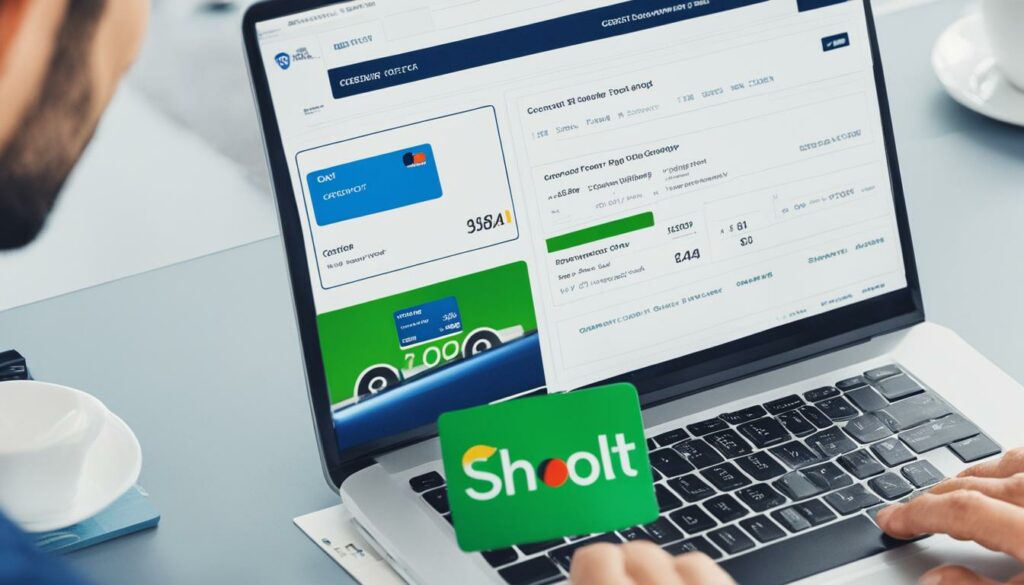The ecommerce checkout process is the final step that customers go through when purchasing items from an online store. It starts after they have added products to their shopping cart and ends when they receive confirmation of their purchase. However, the checkout process is not always smooth, and many customers abandon their carts before completing the purchase.
This section will explore the importance of optimizing the checkout process in ecommerce and provide strategies to improve it. Data from various sources shows that the average cart abandonment rate for ecommerce retailers is around 69%, resulting in missed sales opportunities. Checkout optimization aims to minimize distractions, reinforce trust, and guide customers towards completing their purchases. It can lead to fewer abandoned carts, increased average order value, and improved conversion rates.
There are several tips to optimize the checkout process, including allowing guest checkout, offering free shipping, providing multiple payment and shipping options, using Google auto-address, implementing one-click checkout, displaying security badges, having a mobile-friendly design, reducing form fields, offering live chat support, using psychological triggers to reinforce sales, showing the checkout flow, and implementing cross-selling and upselling techniques.
Key Takeaways:
- Optimizing the checkout process in ecommerce is crucial to reduce cart abandonment and improve conversion rates.
- Strategies like guest checkout, free shipping, multiple payment options, and mobile-friendly design can enhance the checkout experience.
- Implementing security measures, using psychological triggers, and displaying the checkout flow can increase trust and reinforce sales.
- Reducing form fields and offering live chat support can streamline the checkout process and cater to customer preferences.
- Cross-selling and upselling techniques can encourage customers to spend more during the checkout process.
Understanding the Importance of Checkout Optimization
In the world of ecommerce, checkout optimization plays a crucial role in driving success. It directly impacts the conversion rates of online businesses, making it a key area to focus on for optimal performance. Research has shown that the default checkout process offered by ecommerce platforms may not always be the best optimized for customers’ experiences.
Checkout optimization is important for several reasons:
- Minimizing Cart Abandonment: One of the primary goals of checkout optimization is to reduce cart abandonment. By identifying and addressing any pain points in the checkout process, businesses can encourage customers to complete their purchases. This leads to higher conversion rates and ultimately, more revenue.
- Increasing Average Order Value: A well-optimized checkout process can also contribute to increased average order value. By implementing strategic techniques such as cross-selling and upselling, businesses can encourage customers to add more items to their carts and ultimately increase their order value.
- Improving Customer Experience: Checkout optimization goes beyond just driving conversions. It also focuses on improving the overall customer experience. By creating a seamless and user-friendly checkout process, businesses can enhance customer satisfaction and build trust, leading to repeat purchases and brand loyalty.
To fully harness the benefits of checkout optimization, ecommerce businesses need to focus on creating a checkout process that is intuitive, efficient, and trustworthy. By addressing pain points, streamlining the process, and implementing best practices, businesses can reduce cart abandonment, increase conversion rates, and ultimately drive success in the highly competitive ecommerce landscape.

Key Considerations for Checkout Optimization
“The key to successful checkout optimization lies in understanding the customer journey and identifying areas for improvement.”
When optimizing the checkout process, it is important to consider the following factors:
- User-Friendly Interface: Ensure that the checkout process is designed with a user-friendly interface that is easy to navigate. Simple and intuitive design elements can significantly enhance the overall customer experience.
- Trust and Security: Building trust and ensuring customer security is paramount in the checkout process. Displaying trust symbols, secure payment options, and transparent communication about data protection help establish trust with customers.
- Clear and Concise Information: Provide customers with all the necessary information they need to make an informed purchase decision. Clear product descriptions, pricing details, and shipping options help customers feel confident in their choices.
- Efficiency and Speed: Streamline the checkout process to minimize steps and reduce the time it takes for customers to complete their purchase. Slow loading times and complex navigation can lead to frustration and cart abandonment.
By considering these key factors and continuously monitoring customer behavior and feedback, ecommerce businesses can optimize the checkout process for improved conversion rates, increased revenue, and long-term success.
Strategies to Improve Checkout Process
In order to optimize the checkout process and improve customer satisfaction, ecommerce stores can implement a variety of strategies. By focusing on enhancing the user experience and addressing common pain points, businesses can increase conversion rates and drive success in their online ventures. Here are some tactics to optimize the checkout process:
1. Allow Guest Checkout
By offering the option for guest checkout, ecommerce stores can eliminate the need for customers to create an account before making a purchase. This streamlines the process for one-time shoppers, reducing friction and preserving their interest in completing the transaction.
2. Offer Free Shipping
Meeting customer expectations for free shipping is important for minimizing cart abandonment. By providing this incentive, ecommerce businesses can improve the overall shopping experience and increase the likelihood of customers finalizing their purchases.
3. Provide Multiple Payment and Shipping Options
Catering to diverse customer preferences is crucial for optimizing the checkout process. By offering a range of payment and shipping options, businesses can accommodate different needs, ensuring a smoother and more personalized experience for customers.
4. Use Google Auto-Address
Simplifying the input of shipping details is essential for enhancing the checkout process. By integrating with Google Auto-Address, ecommerce stores can save customers time and effort by automatically populating their shipping information based on accurate and up-to-date data.
5. Implement One-Click Checkout
Reducing friction and streamlining the checkout process is vital for preventing cart abandonment. By implementing one-click checkout, businesses can enable returning customers to complete their purchases with minimal effort, saving them time and increasing the likelihood of conversion.
6. Display Security Badges
Building trust and enhancing payment security is crucial for encouraging customers to proceed with their purchases. By prominently displaying security badges and trust seals, ecommerce stores can alleviate concerns and instill confidence in customers, reducing hesitation at checkout.
7. Optimize for Mobile-Friendly Design
Catering to the increasing number of mobile shoppers is essential for checkout optimization. By ensuring that the checkout process is mobile-friendly and responsive, businesses can provide a seamless experience across devices, enhancing convenience and improving conversion rates.
8. Reduce Form Fields
Minimizing the time and effort required from customers is key to preventing cart abandonment. By reducing the number of form fields to only essential information, ecommerce stores can streamline the checkout process, making it faster and more user-friendly.
9. Offer Live Chat Support
Addressing customer concerns and queries in real-time can significantly improve the checkout experience. By implementing live chat support, businesses can provide immediate assistance and guidance to customers, increasing trust and ensuring a smooth transaction.
10. Use Psychological Triggers
Persuasive techniques such as scarcity, social proof, and personalized recommendations can reinforce sales and create a sense of urgency during the checkout process. By strategically incorporating these psychological triggers, ecommerce stores can increase conversion rates and encourage customers to complete their purchases.
11. Show the Checkout Flow
Guiding customers through the checkout process can alleviate confusion and reduce cart abandonment. By displaying the checkout flow with clear steps and progress indicators, businesses can provide transparency and help customers understand the process, instilling confidence and increasing conversion rates.
12. Implement Cross-Selling and Upselling Techniques
Encouraging customers to spend more during the checkout process can boost average order value. By implementing cross-selling and upselling techniques, businesses can recommend relevant products, accessories, or upgrades to customers, increasing their overall purchase amount.
By implementing these strategies to optimize the checkout process, ecommerce businesses can improve customer satisfaction, increase conversion rates, and drive success in their online endeavors.
Understanding Customer Behavior in the Checkout Process
Customer behavior plays a significant role in the checkout process. It is essential for ecommerce businesses to understand the factors that influence customer behavior and address them through effective checkout optimization strategies. By doing so, businesses can improve conversion rates and reduce cart abandonment.
Research shows that unexpected changes during the checkout process can lead to cart abandonment. Additional costs like shipping fees and taxes that customers are not anticipating can cause them to second guess their purchase and abandon their carts. To prevent this, it is important for ecommerce businesses to be transparent about all costs from the beginning and avoid any surprises at the checkout stage.
Forced account creation and a long, complex checkout process are also significant contributors to cart abandonment. Customers value convenience and simplicity, so it is crucial to provide them with a guest checkout option and streamline the entire process. By eliminating any unnecessary steps or account requirements, businesses can minimize friction and make it easier for customers to complete their purchases.
Website crashes, poor performance, and slow load times can create frustration and lead to abandoned carts. Customers expect a smooth and efficient online shopping experience, and any technical issues can deter them from completing their purchases. It is important for ecommerce businesses to invest in reliable hosting, optimize website performance, and ensure quick loading times to provide a seamless checkout experience.
Lack of payment options and concerns about safety and security also influence customer behavior during checkout. Customers want flexibility when it comes to payment methods, so offering a variety of options can help meet their preferences. Additionally, displaying trust seals and security badges can instill confidence in customers and alleviate any concerns they may have about the security of their personal information.
Understanding customer behavior in the checkout process and addressing the factors that affect checkout conversion are crucial for ecommerce businesses to optimize their checkout process. By implementing strategies to minimize cart abandonment and create a seamless checkout experience, businesses can significantly improve conversion rates and drive success in the competitive online landscape.

| Factors Affecting Customer Behavior in the Checkout Process | Impact on Checkout Conversion |
|---|---|
| Unexpected changes during checkout (e.g., additional costs) | Can lead to cart abandonment |
| Forced account creation and complex checkout process | Contribute to cart abandonment |
| Website crashes, poor performance, and slow load times | Create frustration and lead to abandoned carts |
| Lack of payment options | Influences customer behavior |
| Concerns about safety and security | Affect customer trust and confidence |
The Relation of Checkout Optimization to Other Ecommerce Metrics
When it comes to ecommerce, checkout optimization goes beyond just providing a smooth purchasing experience for customers. It is closely intertwined with various other ecommerce metrics, such as conversion rate and revenue.
A well-optimized checkout process can have a significant impact on the conversion rate. By reducing friction and providing a seamless user experience, customers are more likely to complete their purchases. This, in turn, translates into higher conversion rates, as a greater percentage of visitors ultimately become paying customers.
Furthermore, checkout optimization plays a crucial role in revenue generation. By capturing more sales opportunities and encouraging customers to spend more, ecommerce businesses can effectively increase their revenue. Implementing cross-selling and upselling techniques during the checkout process can boost the average order value and contribute to overall revenue growth.
But the impact of checkout optimization doesn’t stop there. It also contributes to customer satisfaction, repeat purchases, and brand loyalty. When customers have a positive checkout experience, they are more likely to return to the website for future purchases and develop a sense of trust and loyalty towards the brand.
Ultimately, checkout optimization plays a vital role in the long-term success of an ecommerce business. By continuously monitoring and analyzing the impact of checkout optimization on key metrics, businesses can identify areas for improvement and drive continuous growth.
Impact of Checkout Optimization on Ecommerce Metrics
| Ecommerce Metric | Impact of Checkout Optimization |
|---|---|
| Conversion Rate | Increase in conversion rate due to reduced friction and seamless user experience. |
| Revenue | Increase in revenue through capturing more sales opportunities and encouraging higher order values. |
| Customer Satisfaction | Enhanced customer satisfaction, leading to repeat purchases and brand loyalty. |
| Brand Loyalty | Improved brand loyalty as customers develop trust through a positive checkout experience. |
By recognizing the relationship between checkout optimization and other ecommerce metrics, businesses can prioritize and invest in optimizing their checkout process. This holistic approach will not only drive immediate results but also contribute to sustainable business growth in the increasingly competitive ecommerce landscape.
Challenges and Considerations in Checkout Optimization
Checkout optimization is crucial for improving the conversion rate and customer experience in ecommerce. However, it comes with its own set of challenges that businesses need to address. By understanding these challenges and considering relevant factors, ecommerce businesses can enhance their checkout process and drive success in online sales.
Minimizing Distractions and Providing Necessary Information
One of the challenges in checkout optimization is finding the right balance between minimizing distractions and providing customers with the necessary information. While streamlining the process is essential to reduce friction and improve efficiency, it’s important not to sacrifice important details that customers need to know. Providing clear and concise information about shipping costs, return policies, and payment options can help build trust and increase the likelihood of completing a purchase.
Optimizing the Payment Gateway
The payment gateway plays a critical role in the checkout process. Optimizing the payment gateway is essential to ensure that it is secure, reliable, and user-friendly. Ecommerce businesses need to carefully choose a payment gateway that meets their specific needs and complies with industry standards for payment security. By providing seamless payment options and a secure checkout experience, businesses can inspire trust in their customers and reduce cart abandonment.
Keeping Up with Evolving Customer Expectations and Technological Advancements
Customer expectations and technology are constantly evolving, posing challenges for ecommerce businesses. To stay competitive in the market, businesses need to adapt to these changes and continuously evaluate and update their checkout optimization strategies. This may involve offering new payment methods, implementing innovative features like one-click checkout or mobile optimization, and staying abreast of industry trends and best practices.
Continuously monitoring customer feedback and analyzing user behavior can also provide valuable insights for improving the checkout process. By addressing customer concerns, identifying pain points, and implementing data-driven optimizations, businesses can enhance the overall checkout experience and boost conversions.
In conclusion, optimizing the checkout process in ecommerce involves tackling various challenges and considering key factors such as minimizing distractions, optimizing the payment gateway, and keeping up with evolving customer expectations. By proactively addressing these challenges and making informed decisions, ecommerce businesses can create a seamless and user-friendly checkout process that drives customer satisfaction and increases conversions.
Conclusion: The Significance of Checkout Optimization in Ecommerce Success
Checkout optimization plays a critical role in the success of ecommerce businesses. By improving the checkout process, businesses can reduce cart abandonment, increase conversion rates, and generate more revenue. The impact of an optimized checkout process can be seen in various ecommerce metrics, including conversion rates, customer satisfaction, and brand loyalty.
Implementing strategies such as allowing guest checkout, offering free shipping, and providing multiple payment options can significantly enhance the checkout experience and motivate customers to complete their purchases. By reducing form fields and using psychological triggers to reinforce sales, businesses can further streamline the process and encourage higher order values.
Understanding customer behavior during checkout is key to optimization. By addressing concerns such as unexpected costs, forced account creation, and payment security, businesses can build trust and minimize cart abandonment. Continuously monitoring and refining the checkout process is crucial for ongoing success in the competitive digital landscape of ecommerce.
In conclusion, checkout optimization is vital for ecommerce businesses to thrive. By creating a seamless and user-friendly checkout experience, businesses can maximize conversion rates, increase revenue, and drive long-term success in the ecommerce industry.
FAQ
What is checkout in ecommerce?
Checkout in ecommerce refers to the final step that customers go through when purchasing items from an online store. It starts after they have added products to their shopping cart and ends when they receive confirmation of their purchase.
Why is checkout optimization important?
Checkout optimization is important because it helps minimize distractions, reinforce trust, and guide customers towards completing their purchases. It can lead to fewer abandoned carts, increased average order value, and improved conversion rates.
What are some strategies to improve the checkout process?
Strategies to improve the checkout process include allowing guest checkout, offering free shipping, providing multiple payment and shipping options, using Google auto-address, implementing one-click checkout, displaying security badges, having a mobile-friendly design, reducing form fields, offering live chat support, using psychological triggers to reinforce sales, showing the checkout flow, and implementing cross-selling and upselling techniques.
How does customer behavior affect the checkout process?
Factors such as unexpected costs, forced account creation, a long and complex checkout process, website crashes, poor performance, lack of payment options, and concerns about safety and security can influence customer behavior during checkout and contribute to cart abandonment.
What is the relation of checkout optimization to other ecommerce metrics?
Checkout optimization directly impacts conversion rates and revenue. By improving the checkout process, ecommerce businesses can increase their conversion rate, capture more sales opportunities, and encourage customers to spend more through cross-selling and upselling techniques.
What are some challenges and considerations in checkout optimization?
Challenges in checkout optimization include finding the right balance between minimizing distractions and providing necessary information, optimizing the payment gateway, keeping up with customer expectations and industry trends, and continuously evaluating and updating checkout optimization strategies.
How significant is checkout optimization in ecommerce success?
Checkout optimization is crucial for ecommerce success as it directly impacts conversion rates, revenue, customer satisfaction, repeat purchases, and brand loyalty. By improving the checkout process, businesses can reduce cart abandonment, increase conversion rates, and generate more revenue.

